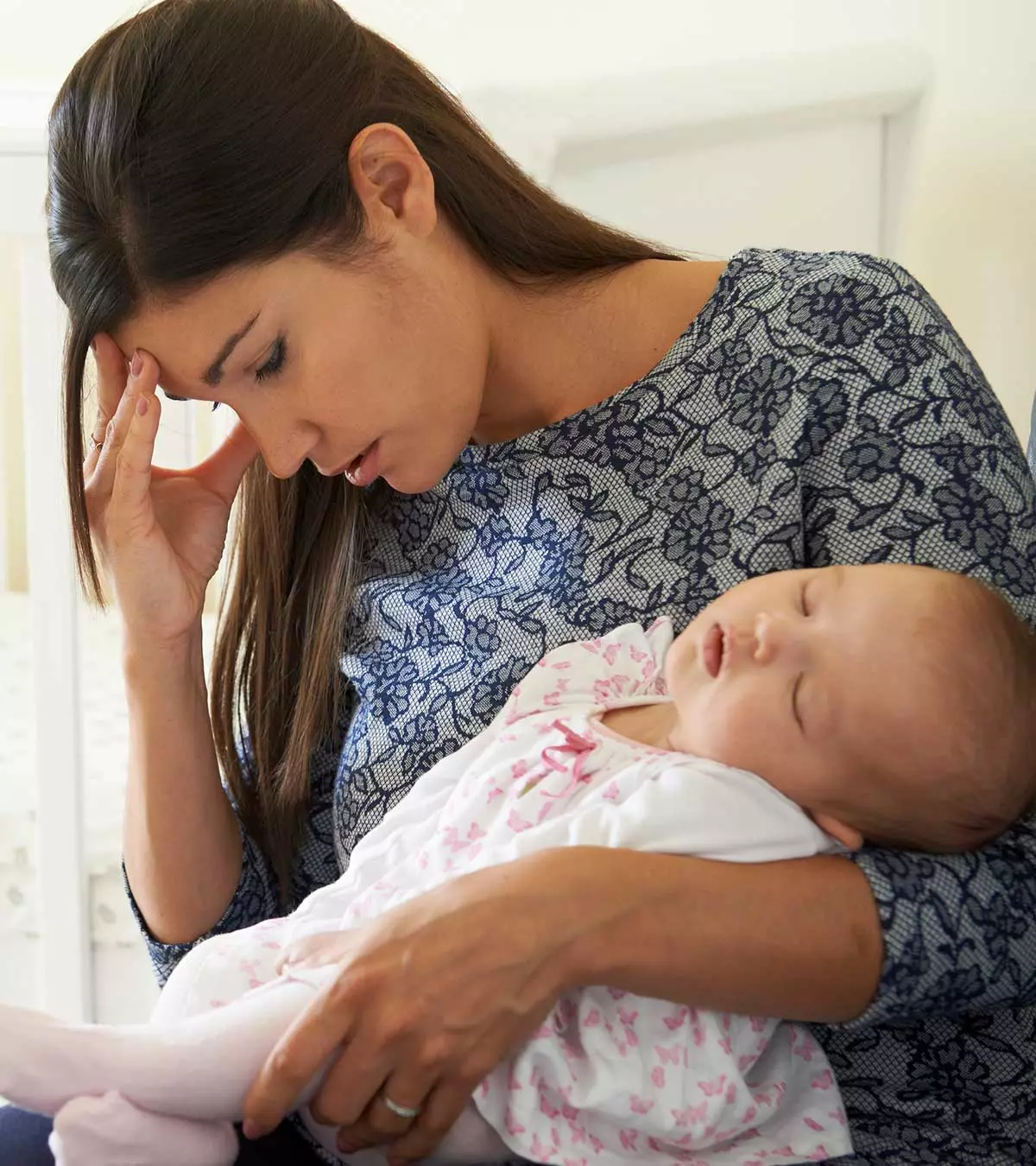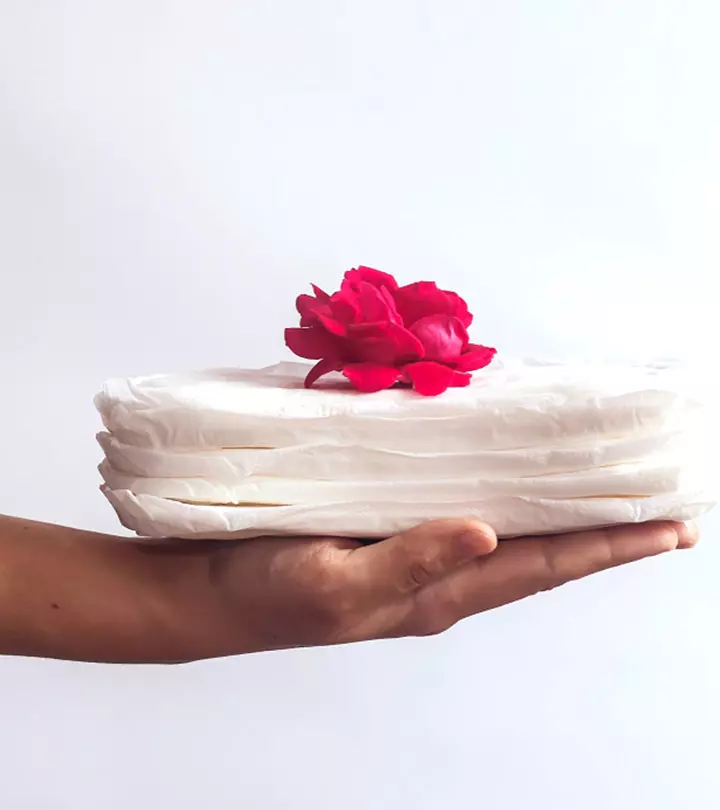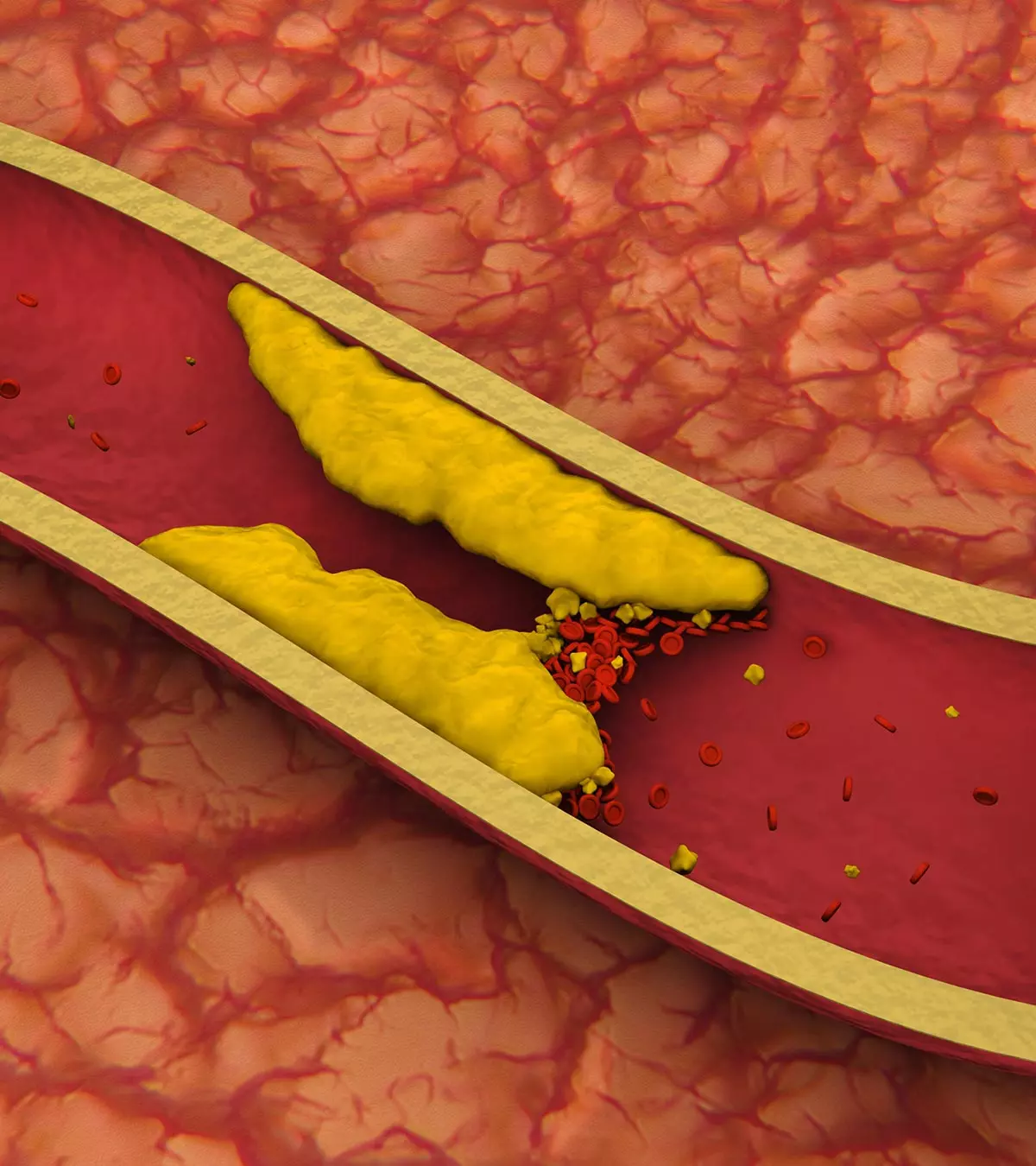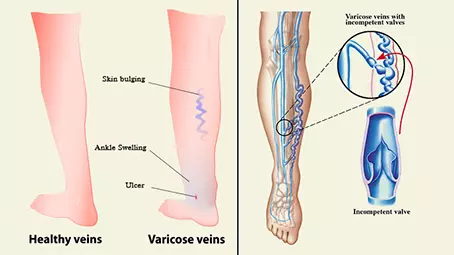
Image: ShutterStock
Childbirth can be exhaustive, and you may wish to take a relaxing bath after the process. However, you need to seek your doctor’s permission before taking a bath after a C-section. If the incision from the surgery or vaginal area is submerged in water for a long time, you may catch an infection. Therefore, it is generally recommended not to scrub yourself vigorously while bathing. It is also advisable to keep your incision dry (1). Most doctors may advise a sponge bath until you recover completely. Read in detail why you should practice caution while bathing after a C-section, the benefits of bathing, and some useful tips to follow.
Key Pointers
- It is typically advised to avoid fully submerged baths for three weeks after surgery, but showering is allowed with caution not to disturb the incision site.
- When bathing after a c-section, use lukewarm water, be gentle with the incision area, and use antibacterial soap as a precaution.
- Severe scrubbing should be avoided, and the incision should be kept dry to prevent infections caused by prolonged submersion in water.
- Most medical professionals recommend taking sponge baths during the recovery period.
Can You Take A Bath After A C-Section?

After a C-section delivery, you may ask your doctor ‘when can I take a bath after C-section’ and they may suggest not to take a fully submerged bath until three weeks after the surgery (2). It is to keep the incision area dry and prevent bath water from entering the vagina. You may also strain yourself by getting in and out of the bathtub, which might delay the C-section recovery.
However, you may take a shower as a part of your self-care routine. But it is important not to scrub or mess the incision area. Also, you should be careful if there is any bandage or wound around the incision. In this case, it has to be dried using a dry cloth or hair dryer to avoid infections that are more likely to occur in moist areas. Proper wound care will ensure a timely healing.
Dr. Eboni January, a board-certified physician/surgeon from East St. Louis, Illinois, says, “Your suturesiStitches or sterile surgical threads used to heal cuts will not get infected if you bathe after a C-section. Infected incisions generally occur when the area is not kept dry. Women are at increased risk for infections if they have a history of uncontrolled diabetes, excess weight, and smoking.”
 Quick fact
Quick factWhy Should You Be Careful While Taking A Bath After C-Section?

After a cesarean, your body needs some time to recover completely. You may experience pains and aches after childbirth. You may also experience vaginal bleeding and fever which may increase the risk of contracting infections (4).
Hence most hospitals recommend and provide a sponge bath under special care. Also, getting in and out of the bath may not be easy soon after a C-section.
Precautions While Having A Bath After C-Section
After a C-section, it is important to take extra care while bathing to prevent infection and promote healing. You may need to follow the following precautions to avoid complications (5) (6).
- Allow the water to run gently over the incision. Do not use direct hand-shower or pour water over that area.
- Use antimicrobial soap to keep microbesiSmall living organisms, including bacteria, archaea, algae, and fungi, that can cause infectious diseases away from the area. Do not apply soap directly; instead, use your hands to create foam and then apply gently on the incision area.
- Use only lukewarm water while taking a bath. Avoid extremely cold or hot water as it could affect the wounded site.

- Take care not to be harsh over the incision area while you are bathing. While cleaning the incision, check for redness, swelling, unusual discharge, warmth, or increased pain (7). If any of these symptoms appear, consult your doctor immediately.
- Once you wash the area, use a clean towel, and pat gently to remove as much water as possible.
- Your doctor may give a medicated ointmentiA substance applied to the skin to soothe or treat burns, wounds, scrapes, and rashes to treat the incision. Use your finger to take the required amount and apply over the area lightly.
- Do not use any other creams or perfumes or bath oils over the incised area. They might irritate the area.
- Avoid using the bathtub for about four weeks as they are rarely cleaned every time after a bath and increase the risk of infections.

- Also, if you have vaginal bleeding, this could contaminateiMaking anything impure or inappropriate through contact with something dirty, harmful the bathtub for you and others using the same tub.
- There is a risk of slipping and falling in the bathtub that may worsen the wound. You should, therefore, wait for the wound to heal completely and then use the tub.
- Public swimming pools and hot tubs contain bacteria and chemicals that may increase the risk of infection or irritation (8). Wait for your doctor’s clearance before engaging in such activities.
Dr. January adds, “Women should use a cloth to cover the incised area until healed. Many women use a sanitary napkin large enough to cover the area. Leave the sticky portion of the napkin covered so that it does not stick to the underwear or clothing, and apply it directly over the incision.”
 Be watchful
Be watchfulWhen you follow precautions, a good bath could be beneficial.
When To Seek Help?
After a C-section, it’s essential to monitor your recovery closely to detect any signs of complications early. Contact your healthcare provider if you experience any of the following symptoms (2) (7):
- Fever
- Increased pain
- Redness or swelling
- Unusual discharge
What Are The Benefits Of Taking A Bath After C-Section?

Taking a warm water bath (immersion therapy) after a cesarean section might provide the following benefits:
- A warm water bath after cesarean delivery may offer immense physical and mental relaxation. It might relieve you from fatigueiThe feeling of tiredness or lack of energy and take your mind off the discomfort. It also helps you maintain postpartum hygiene and provides pain relief. A study report states that “Physical therapies including mother-infant skin-to-skin contact, taking warm showers and breathing lavender oil aroma were used for reducing postpartum fatigue (9).”
- A warm water bath may relax the muscles of the pelviciThe region located near pelvis, which includes the bladder and rectum region and have a soothing effect on you.
- The bath could help ease hemorrhoidsiSwollen and inflamed veins around the anus or in the lower rectum, also known as piles that may irritate and swell after the delivery. You could also use a sitz bath to get relief from hemorrhoids and for perineal care (10). It also provides constipation relief.
- It may help repair episiotomy and soothe the area to make you feel better.
 Quick tip
Quick tipHow To Use a Sitz Bath After Birth?

A sitz bath may offer some relief from soreness, irritation, itching, or burning in the perineum region caused by trauma during childbirth or from hemorrhoids, anal fissures, Bartholin cysts, or constipation. However, it is of utmost importance to seek your doctor’s approval before you try a sitz bath. The doctor might review the healing of the incision site before allowing it. Here are the steps involved in using a sitz bath (11) (12).
- Fill a clean bathtub with warm water until it is at a depth of 3-4 inches. Your healthcare provider might suggest using cold water in some cases.
- Add salt or medicine to the water if your doctor has recommended it.
- Gently ease yourself into the bathtub and take a seat at the bottom. Enter the bath only if the water temperature feels pleasant to you.
- If necessary, grasp a railing for support or seek assistance from a family member, friend, or caregiver.
- If climbing into the bathtub is difficult, you may also use small tubs that fit on the toilet rim.
Frequently Asked Questions
1. Can I add Epsom salt or other bath salts to my bath after a C-section?
It is best to avoid adding Epsom salt or other bath salts to your bath after a C-section, as they may irritate the incision and delay the healing process. Seek advice from a healthcare practitioner before using bath salts after a C-section.
2. How often can I take a bath after a C-section?
After a C-section, you may bathe as often as you like, as long as you wait for at least 24 hours and follow your healthcare provider’s instructions.
3. Can I bathe if I have staples or stitches after a C-section?
If you have staples or stitches after a C-section, you can take a bath after removing the wound dressing as long as the incision area is well-healed and there is no drainage (2).
4. Can I bathe if I have a catheter after a C-section?
It may be safe to take a shower after a C-section if you have a catheter. To do so, start by emptying the catheter bag. Afterward, use a towel to dry both the catheter and the bag once you are done (13).
You should avoid scrubbing the incision area or submerging in the water while taking a bath after a C-section. Hospital staff may provide you with a sponge bath after C-section since you won’t be able to take a bath until you recover from anesthesiaiThe use of medications to alleviate pain during surgery and other treatments effects and pain after the procedure. So, when can you take a bath after a C-section? You can take a shower using an antimicrobial soap only after your doctor permits. Soaking in the bath can be done after the vaginal secretions cease, and the wound is healed after a few postpartumiThe period following childbirth weeks. You may pat dry the incision site after bath and apply the recommended ointments or creams. Proper incision care will expedite the healing process. You may also avoid bathtubs if they are not cleaned after one use. If you notice redness, discharge, or swelling on your incision wound, contact your obstetrician immediately.
Infographic: Precautions While Having A Bath After A C-Section
A C-section is a surgical procedure associated with specific aftercare measures that you should follow to heal correctly and prevent any risk of infections at the site of surgery. Therefore, to learn the things to avoid while bathing after a C-section, scroll through the infographic below. Illustration: Momjunction Design Team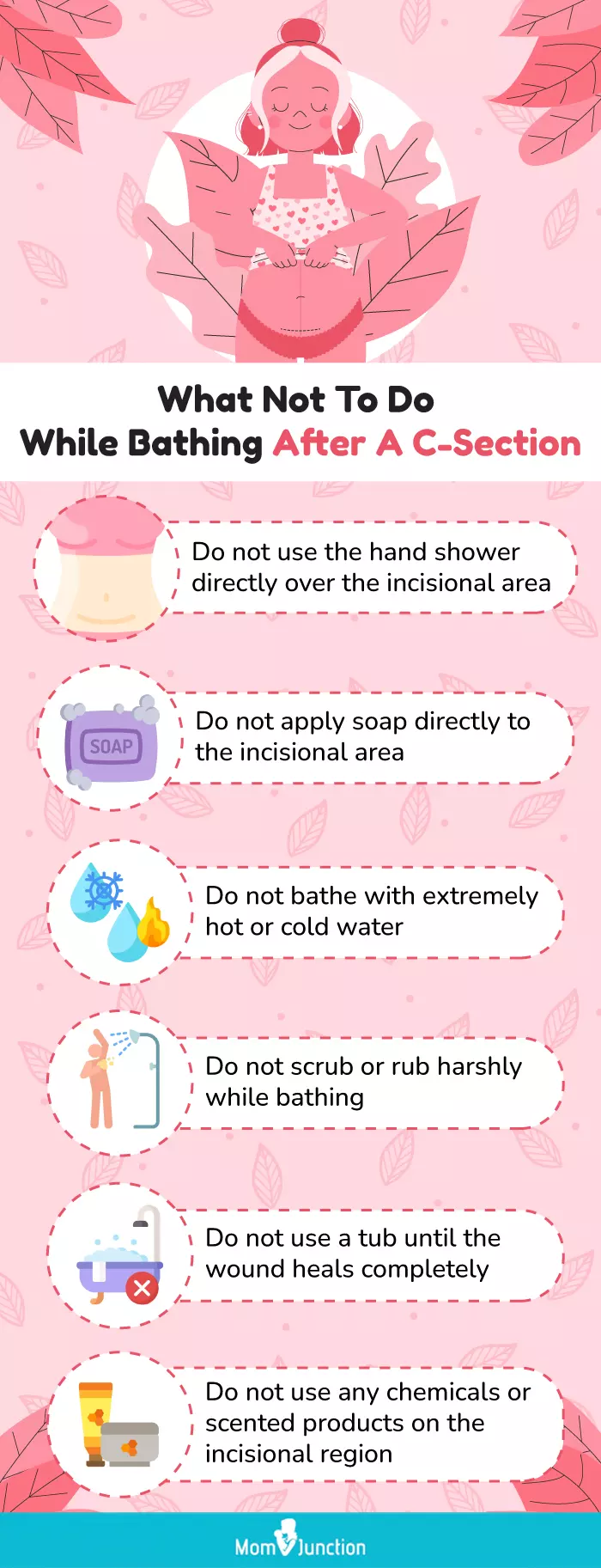
Illustration: Bath After A C-Section: Benefits And Precautions To Take

Image: Dall·E/MomJunction Design Team
After giving birth, it’s important to know when you can take a shower. Learn from this video how long you should wait before taking a shower after delivery.
References
- Cesarean section.
https://www.betterhealth.vic.gov.au/health/healthyliving/caesarean-section - Going home after a C-section.
https://medlineplus.gov/ency/patientinstructions/000624.htm - Your care and recovery after caesarean section.
https://www.wslhd.health.nsw.gov.au/ArticleDocuments/1363/Your%20care%20and%20recovery%20after%20Caesearean%20section%20V4%20.pdf.aspx - Serpil Duran and Gülşen Vural; (2023); Problems Experienced by the Mothers in Post-Cesarean Period: A Narrative Review.
https://pmc.ncbi.nlm.nih.gov/articles/PMC10612559/ - Healing From Delivery.
https://www.cmh.edu/departments-and-clinics/fetal-health-center/postpartum-services/healing-from-delivery/ - The Do’s and Don’ts of Healing from a C-Section.
https://intermountainhealthcare.org/blogs/the-dos-and-donts-of-healing-from-a-csection - Monitoring caesarean-section surgical wounds for infection.
https://www.gloshospitals.nhs.uk/your-visit/patient-information-leaflets/monitoring-caesarean-section-surgical-wounds-for-infection/ - Preventing Swimming-related Illnesses.
https://www.cdc.gov/healthy-swimming/prevention/index.html - Jialu Qian et.al; (2021); Effectiveness of nonpharmacological interventions for reducing postpartum fatigue: a meta-analysis.
https://link.springer.com/article/10.1186/s12884-021-04096-7 - Postpartum Pain Management.
https://www.acog.org/womens-health/faqs/postpartum-pain-management - Caring for Yourself After Delivery.
https://www.chicago.gov/city/en/sites/onechifam/home/pregnancy-sexual-parental-health/parental-health/caring-for-yourself-after-delivery.html#:~:text=Taking%20sitz%20baths%20or%20anot%20need%20to%20be%20removed. - Sitz Bath.
https://my.clevelandclinic.org/health/treatments/24137-sitz-bath - Going Home with a Catheter.
https://www.mkuh.nhs.uk/patient-information-leaflet/going-home-with-a-catheter#:~:text=You%20can%20have%20a%20bath
Community Experiences
Join the conversation and become a part of our nurturing community! Share your stories, experiences, and insights to connect with fellow parents.
Read full bio of Dr Sachchidananda Maiti
- Dr. Eboni January is a board-certified physician/surgeon and the CEO of Weaver Wellness Center in Houston, Texas. She received her medical doctor's degree from Wright State University and a master's degree from Southern Illinois University School of Medicine.
 Dr. Eboni January is a board-certified physician/surgeon and the CEO of Weaver Wellness Center in Houston, Texas. She received her medical doctor's degree from Wright State University and a master's degree from Southern Illinois University School of Medicine.
Dr. Eboni January is a board-certified physician/surgeon and the CEO of Weaver Wellness Center in Houston, Texas. She received her medical doctor's degree from Wright State University and a master's degree from Southern Illinois University School of Medicine.
Read full bio of Rebecca Malachi
Read full bio of Swati Patwal
Read full bio of Dr. Joyani Das












